What does response time imply? The response time of a display screen is the typical time it takes for a pixel to vary from one coloration to a different. In a great world, a pixel would change coloration the moment it receives a sign. Nonetheless, the best way show applied sciences work means there will be huge variations by way of how shortly this transformation occurs.
You’ll see numerous figures quoted for the response instances of the very best gaming monitor choices proper now, in addition to some super-fast refresh charges, however what do these numbers actually imply relating to really working video games? On this information, we’ll clarify all it’s worthwhile to find out about monitor speeds.
Again within the days of chunky cathode ray tube screens (CRTs), response time wasn’t a consideration, because the phosphor coating on the again of the display screen that might glow in response to the electron beam being fired at it responded in a short time – within the order of 0.01ms or sooner. In the meantime, applied sciences comparable to plasma and OLED can have equally speedy sub-0.01ms response instances.
Nonetheless, the liquid crystal shows (LCDs) that dominate the pc show market – and many of the TV market too – reply way more slowly. The very quickest panels can attain as little as 0.5ms for some coloration transitions, however they usually common 3-4ms throughout a spread of transitions whereas the slowest panels can take so long as 30ms or extra.
The far slower response of LCDs is all the way down to the truth that they need to bodily transfer the liquid crystals in every crimson, inexperienced, and blue sub-pixel as a way to have an effect on how the sunshine from the display screen’s backlight passes by way of them. In distinction, the opposite applied sciences above don’t have any shifting elements above a molecular stage. A gradual response time may end up in ghostly trails and blurred element throughout quick onscreen motion, as demonstrated within the image under.
Why does response time matter?
When displaying a static picture on-screen, to all intents and functions, response time doesn’t matter. Nonetheless, as quickly as a display screen reveals a altering picture, comparable to a video, sport, and even simply the shifting cursor of a mouse, a gradual response time can create a number of issues.
The obvious challenge is that you simply get a ghostly, trailing picture behind shifting objects. These ghost photographs are the pixels that had been beforehand displaying the article that simply moved, nonetheless displaying a touch of the earlier picture. With a gradual sufficient response time, quick sufficient body charge, and quick sufficient motion, you’ll be able to see many ghost photographs smeared throughout a number of inches of your display screen.
Not solely can these trails be distracting however in addition they obscure particulars, making for a fuzzy, low-quality picture. This mix can blur quick motion in motion pictures, and even primary actions comparable to getting a cursor to hit the appropriate button will be affected. As for gaming, a gradual response time could make faster-paced video games comparable to first-person shooters virtually unplayable, whereas even slower-paced however detailed video games, comparable to real-time technique video games, can endure from blurriness.
Additionally, whereas the pixels of even shows with gradual response instances have a tendency to start out altering coloration fairly shortly, they’ll take a very long time to vary sufficient to be noticeable. This slowness can in flip make the show really feel much less aware of your inputs. That is much less of an issue when passively watching video, however when gaming or interacting together with your show, these slight delays is usually a matter of digital life and dying.
Response time vs body charge
The significance of response time is inherently linked to the refresh charge of a show. For a 30fps video, every body is proven for 33ms, so there needs to be loads of time for many screens to totally transition the colour of every pixel earlier than the following body seems, primarily eliminating the visibility of ghosting and different issues with a slower response time.
Nonetheless, even simply shifting to a 60fps video, or taking part in a sport on a 60Hz monitor, will drop the body time to simply 16ms. Transfer as much as a 144Hz display screen and also you’re a 7ms body time whereas 240Hz screens are hitting simply 4ms per body.
Placing apart arguments in regards to the visibility of such quick adjustments to the human eye, it’s apparent that working a 240Hz display screen with a response time of 10ms ends in the show being incapable of updating its picture as quick because the indicators it’s being despatched.
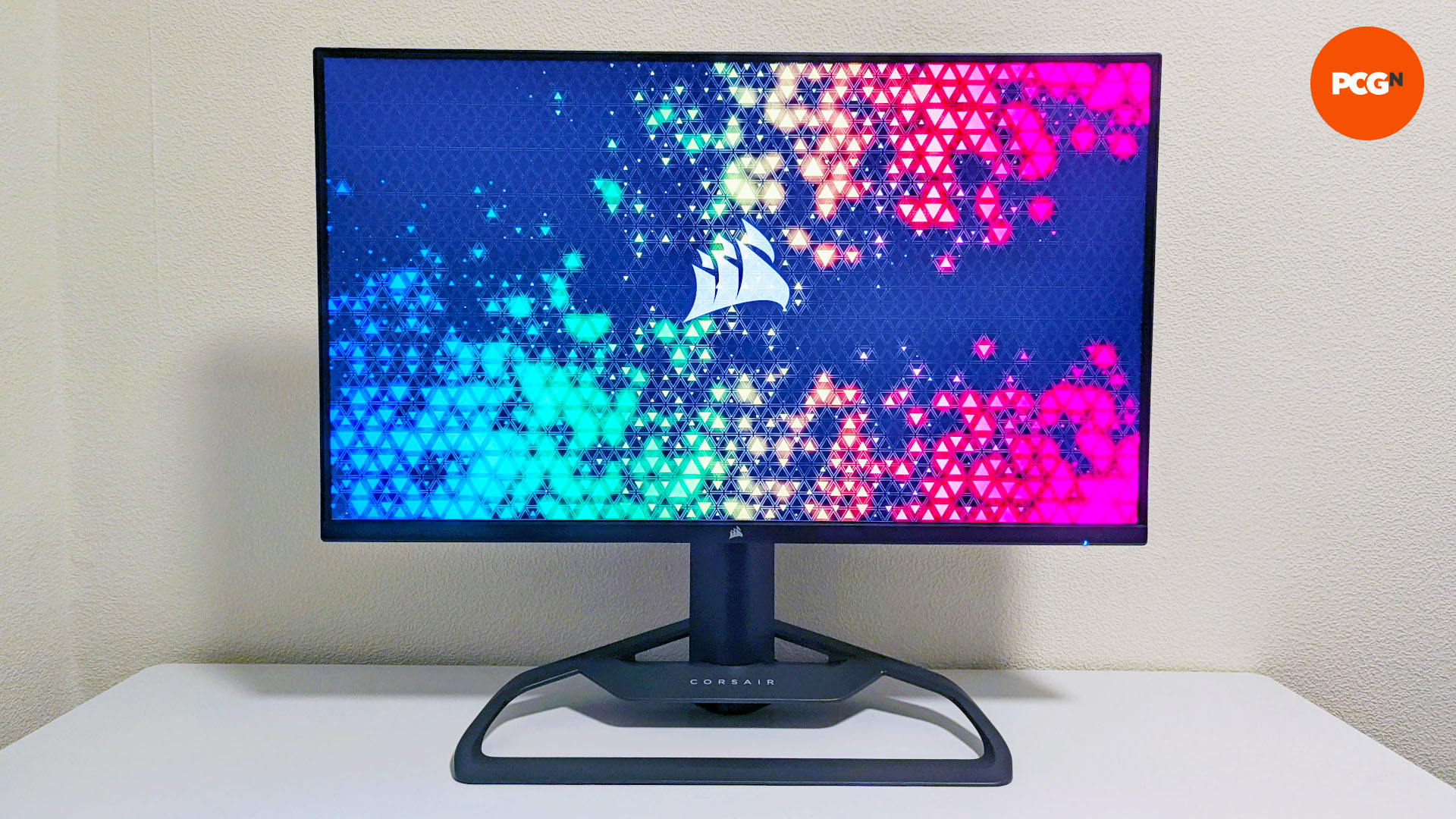
How briskly is quick sufficient?
So, a quick response time is vital for maintaining with the quick refresh charges of recent gaming screens, however simply how vital are each these elements? Effectively, all the best way again in 1968, Robert Miller of IBM established that people would understand as instantaneous any visible response from urgent a button that was faster than 0.1 second (100ms).
A number of research since have additionally bolstered the notion that 100ms is the restrict of our potential to visually understand the world round us. This appears to point that it doesn’t matter if a display screen has a refresh charge of 60Hz or 240Hz, or a response time of 5ms or 30ms.
Nonetheless, this determine is deceptive relating to screens for 2 causes. First, we’re not simply contemplating the response of your eyes, but additionally their interplay together with your mind because it perceives urgent a button, sending that sign to your finger then ready on your eyes to detect a response, after which sending that sign again to your mind for it to course of.
As a substitute, the very best indication but discovered of simply how briskly people can react to visible stimulus was a examine printed in 2014 by Mary Potter, professor of mind and cognitive sciences at MIT, which confirmed that the human visible cortex is ready to detect a change in a picture when seen for as little as 13ms.
This determine is low sufficient that it begins to cross over with the decrease finish of body instances for screens with quick refresh charges, and the higher finish of response time figures for LCD screens. So, if a show has a body time or response time slower than this determine, then technically, our eyes can detect that slowness.
The opposite cause why the primary latency take a look at determine is deceptive comes again to the difficulty of ghosting. Whilst you can argue the deserves of quick refresh charges, what your eyes see when there’s quick movement on a show with a quick refresh charge and gradual response time is nonetheless a picture that’s filled with ghostly smearing and blurred element. It’s not your eyes creating the blur (which is a complete different matter of dialog) however the display screen displaying the blur.
In the end, the purpose at which visible ghosting or a delayed really feel to the responsiveness of a display screen turns into problematic will range between customers and completely different duties. Subjectively, for fast-paced gaming in our assessments, we’ve been in a position to detect the distinction in responsive really feel between 240Hz and 144Hz panels with response time averages of 4ms and 6ms respectively, and we’ve discovered any response time above that 13ms determine to be meaningfully detrimental to gaming efficiency.
Nonetheless, for slower-paced gaming and film watching, any response time under 13ms is ok, and sometimes you may get away with a slower response time too. Essentially the most important cut-off for many makes use of, even with non-gaming screens, is the 16ms determine that interprets to the body time of a 60Hz show. In case your monitor’s response time is slower than 16ms, then you may even see ghosting and understand a slight sluggishness within the responsiveness of your cursor, even on 60Hz shows.
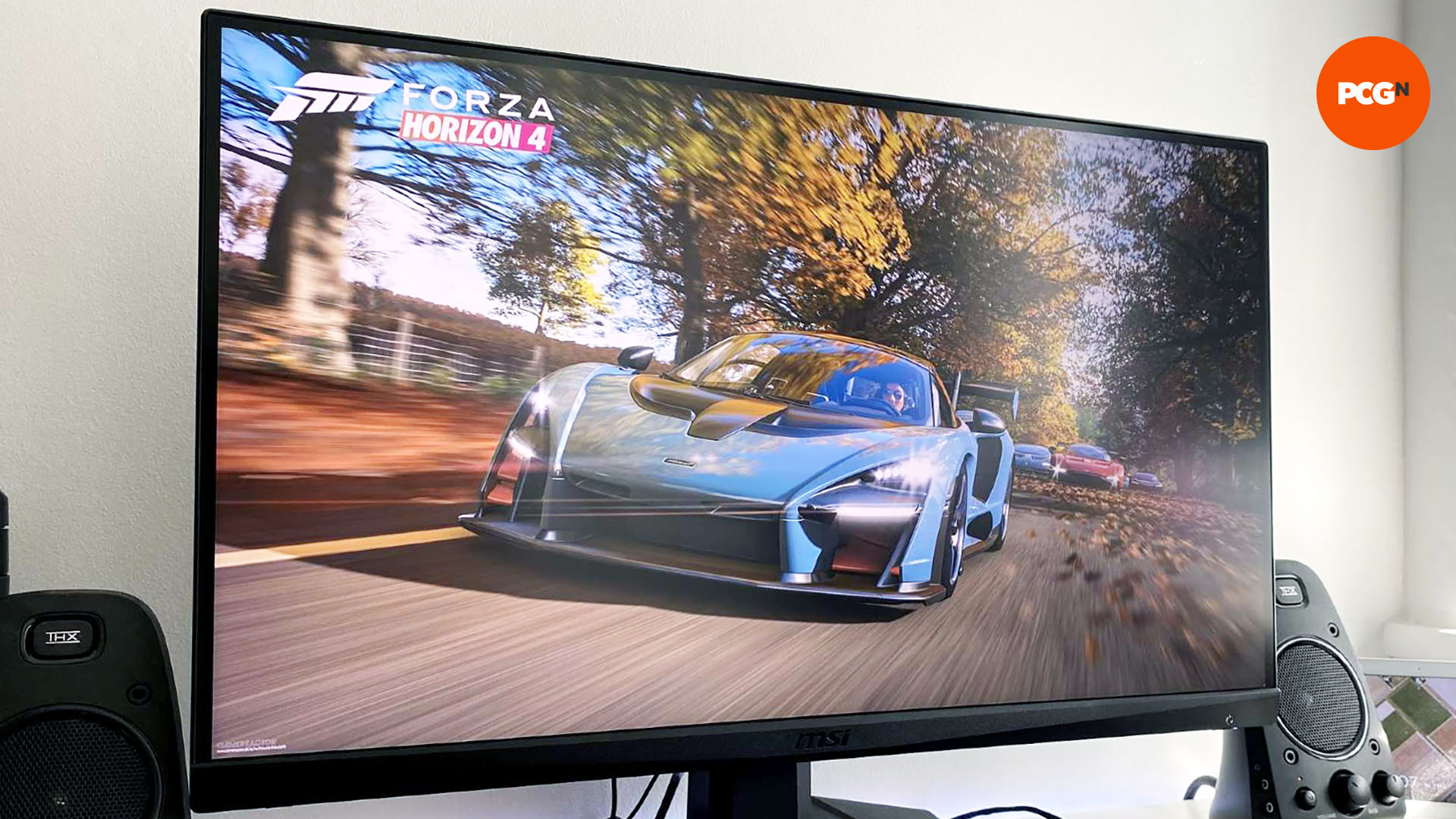
Shades of grey
Essential to understanding the response time of LCDs is the truth that completely different coloration transitions can occur at completely different charges. It’s because the brightness of any given crimson, inexperienced, or blue sub-pixel is decided by the quantity of twist or motion of its liquid crystals, and that twist is decided by the voltage utilized throughout the crystals. The better the voltage, the better the change in liquid crystal place.
Crucially, although, as that voltage will increase, so does the speed of change of place of the liquid crystals. In different phrases, the better the change in coloration of a pixel, the sooner the speed of change of coloration of that pixel. In consequence, it may be faster for a pixel to vary from black to white than from one middling shade of grey to a different.
That is additionally why monitor producers can report such low response time figures for his or her shows – these figures pertain to the quickest potential coloration transition. Nonetheless, the real-world expertise of utilizing a monitor is that you simply’re seeing a complete vary of coloration transitions, so a mean determine is extra significant. Some producers report a gray-to-gray response time determine, however even that is dependent upon precisely what number of samples the producer has examined.
This distinction in charge of change can also be why screens are inclined to have an overdrive setting. This setting will increase the voltage utilized to the liquid crystals to hurry up their transition. Nonetheless, the draw back is that by rising the preliminary voltage, the show runs the danger of over or undershooting the colour for which it’s aiming, requiring the pixel to tug again and proper the colour. This visible impact of this over or undershoot is called inverse ghosting or corona.
A little bit little bit of overdrive can tighten up a show’s response effectively, however an excessive amount of may end up in common over or undershoot, making a poor-quality picture that appears like the results of a worse response time than at decrease overdrive settings, because of the additional correction wanted.
Within the picture under, you’ll be able to see the results of enabling overdrive on a gaming monitor. With out overdrive (left) we see the least clear picture. With a little bit overdrive (center) the picture is sharper, however with an excessive amount of overdrive (proper) inverse ghosting ruins the picture.
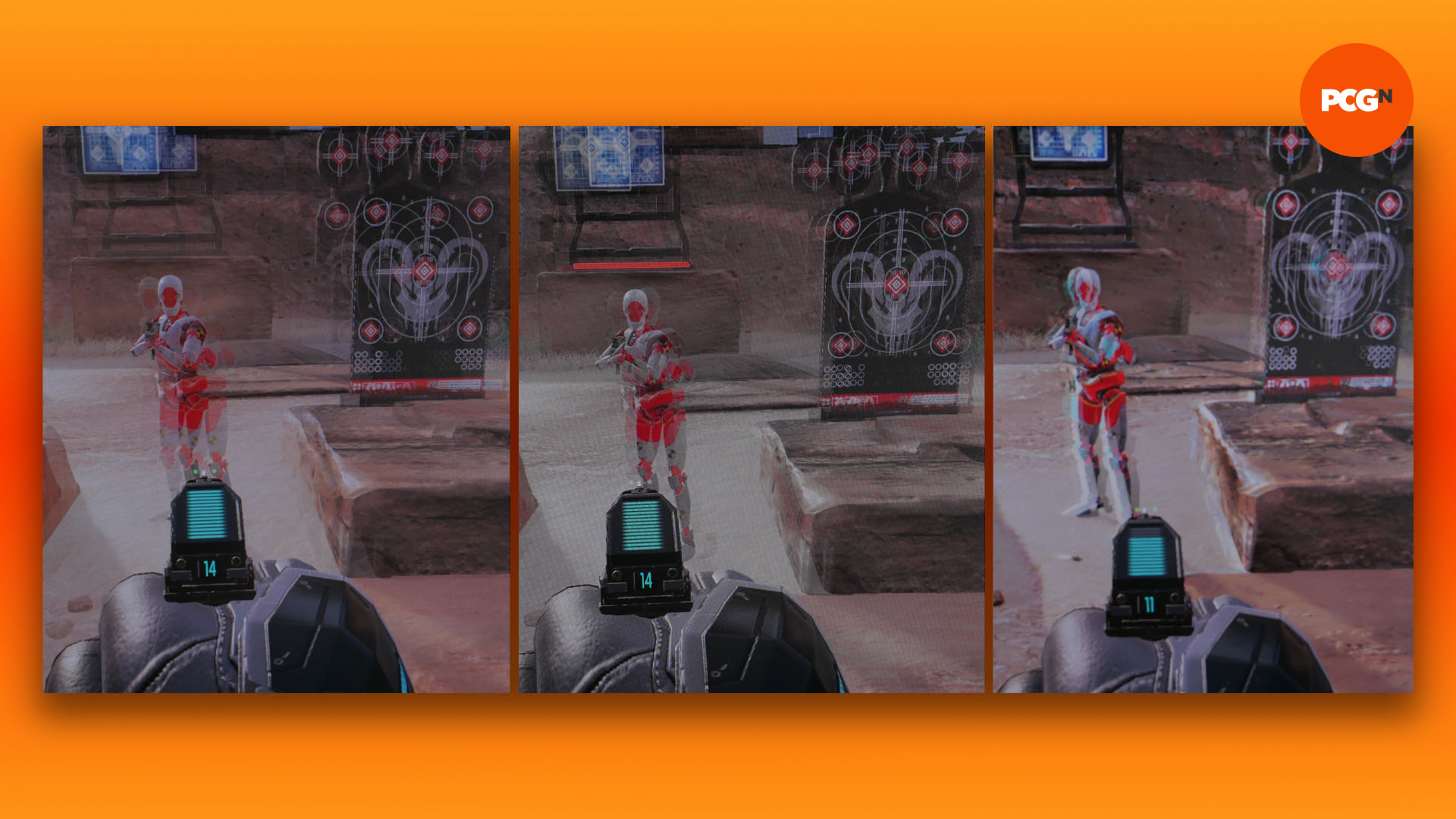
Response time and LCD varieties
There are three predominant LCD panel varieties – IPS, TN, and VA – and common response instances range significantly between them. Famously, TN panels usually provide the quickest response time, with fashionable gaming shows averaging round 3-4ms. IPS panels may also dip as little as this however are inclined to common between 4-6ms.
VA panels usually common 8-12ms, though a few of Samsung’s newest panels have been proven to realize sub-3ms common response instances. However we’ve but to check these ourselves.
This typical common response time of VA panels is why we don’t suggest them for players who play faster-paced video games. VA panels have the benefit of upper native distinction ratios than both IPS or TN panels, which is why they’re favored for TVs, however for PC gaming screens, we are inclined to suggest IPS as an alternative.
In the meantime, TN remains to be the best choice for fast-paced video games, significantly for those who’re considering of stepping as much as a 240Hz display screen. Nonetheless, the massive drawback of this show kind is poor viewing angles. In addition to making them a poor selection for sitting again and watching a video (the picture can grow to be unwatchable if it’s even considered just a bit method off-center), this will make for a picture that appears uneven throughout the span of the display screen. So, once more, that is why we’ve tended to view IPS panels as the very best all-rounder selection of LCD panel kind.
Within the picture under, you’ll be able to see that the sooner response time of TN (left) makes for a barely sharper picture than IPS (center), whereas VA is way blurrier (proper).
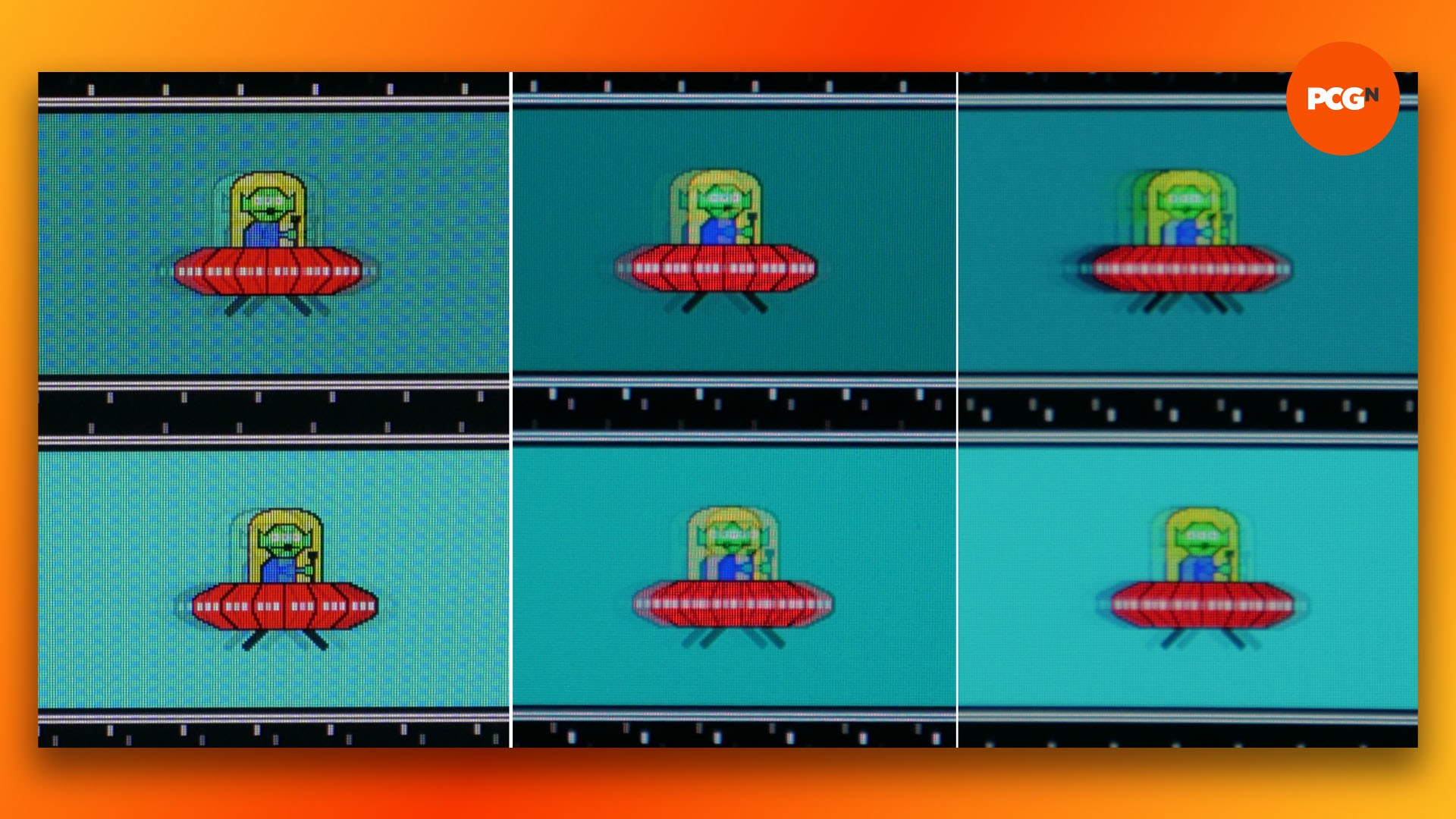
Testing for response time
Testing for response time is in principle fairly easy. You simply must report a sign being despatched to a show and use a high-speed optical sensor to measure how the show’s brightness adjustments (a change in brightness is successfully a coloration transition). Nonetheless, establishing such a take a look at, calibrating it and collating the outcomes isn’t any imply feat. Fortunately, although, there may be now an all-in-one response time testing instrument out there that we’ll be incorporating into our testing.
The Open Supply Response Time Tester (OSRTT) – created by tech YouTuber TechTeamGB – mechanically measures a complete host of brightness transitions and collates the outcomes right into a complete image of a monitor’s response time efficiency.
It measures 30 completely different brightness transitions, cut up throughout 15 transitions that improve the brightness and 15 that lower the brightness.
The outcomes of those assessments are visualized in quite a few methods, however essentially the most related ones are three heatmaps displaying the brightness values (measured in cd/m²) alongside their axes, and the response time in milliseconds within the corresponding cells.
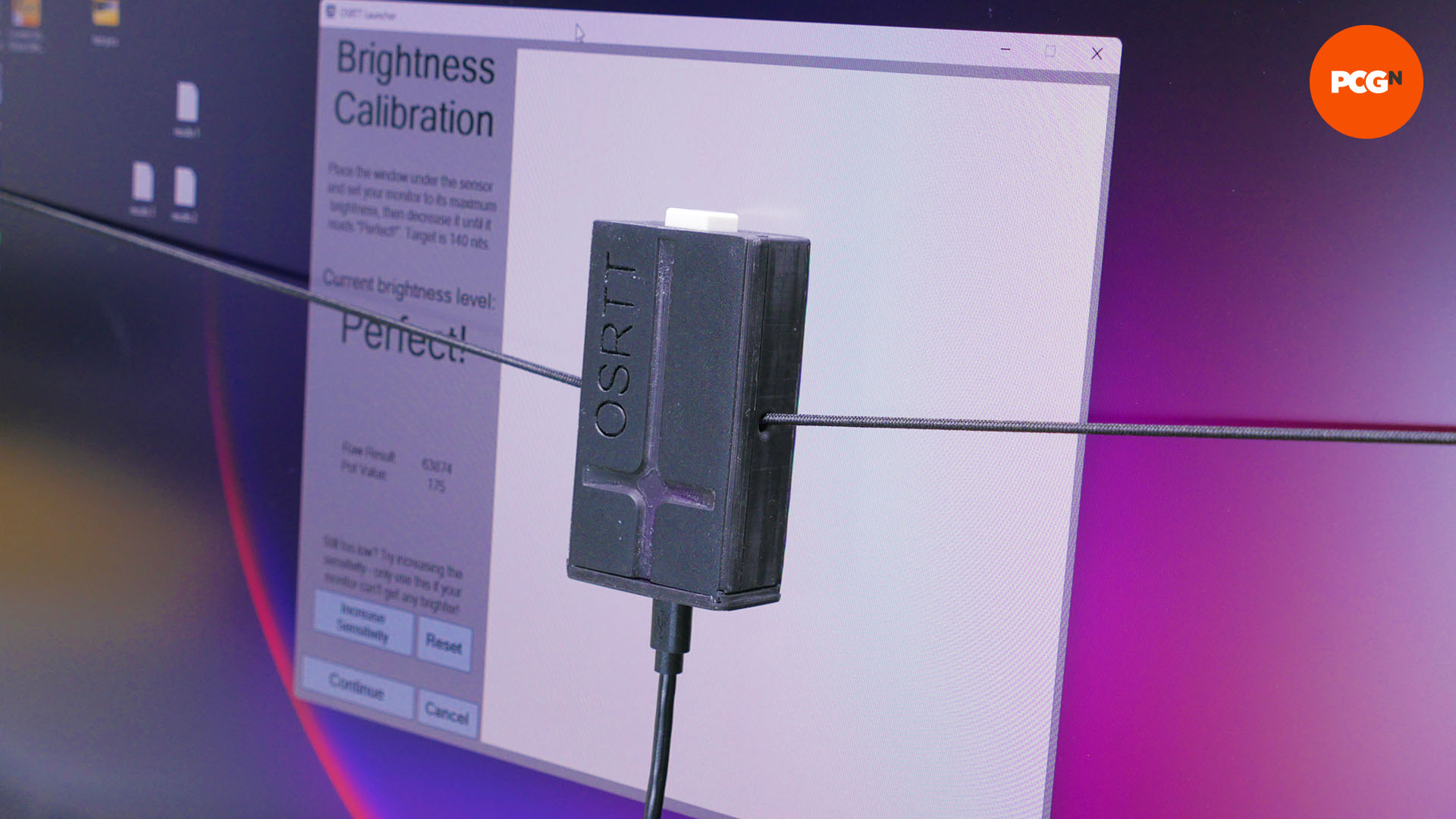
These three heatmaps present preliminary response time – a measure of how shortly a show initially hits its supposed worth, in addition to the whole transition time – how lengthy it takes to totally attain the supposed worth after over or undershooting and returning to the supposed coloration.
The third heatmap reveals the perceived response time – a weighted calculation of the obvious pace of the show when over and undershoot are accounted for). From these outcomes, we are able to instantly get a superb image of how usually quick a show is each earlier than and after overshoot has been accounted for.
The take a look at additionally produces a heatmap for overshoot and undershoot, so it’s once more straightforward for us to see simply how badly or not a show is affected by this impact. Different key figures embrace what number of coloration transitions are quick sufficient to finish throughout the body time of the monitor’s refresh charge, and enter lag is measured too.
All these figures are collated into an total OSRTT rating. Nonetheless, whereas that is helpful as a single metric, it’s in the end an arbitrary worth. What’s extra helpful for us is having the ability to report the person figures which have essentially the most bearing on our conclusions a couple of monitor’s capabilities.
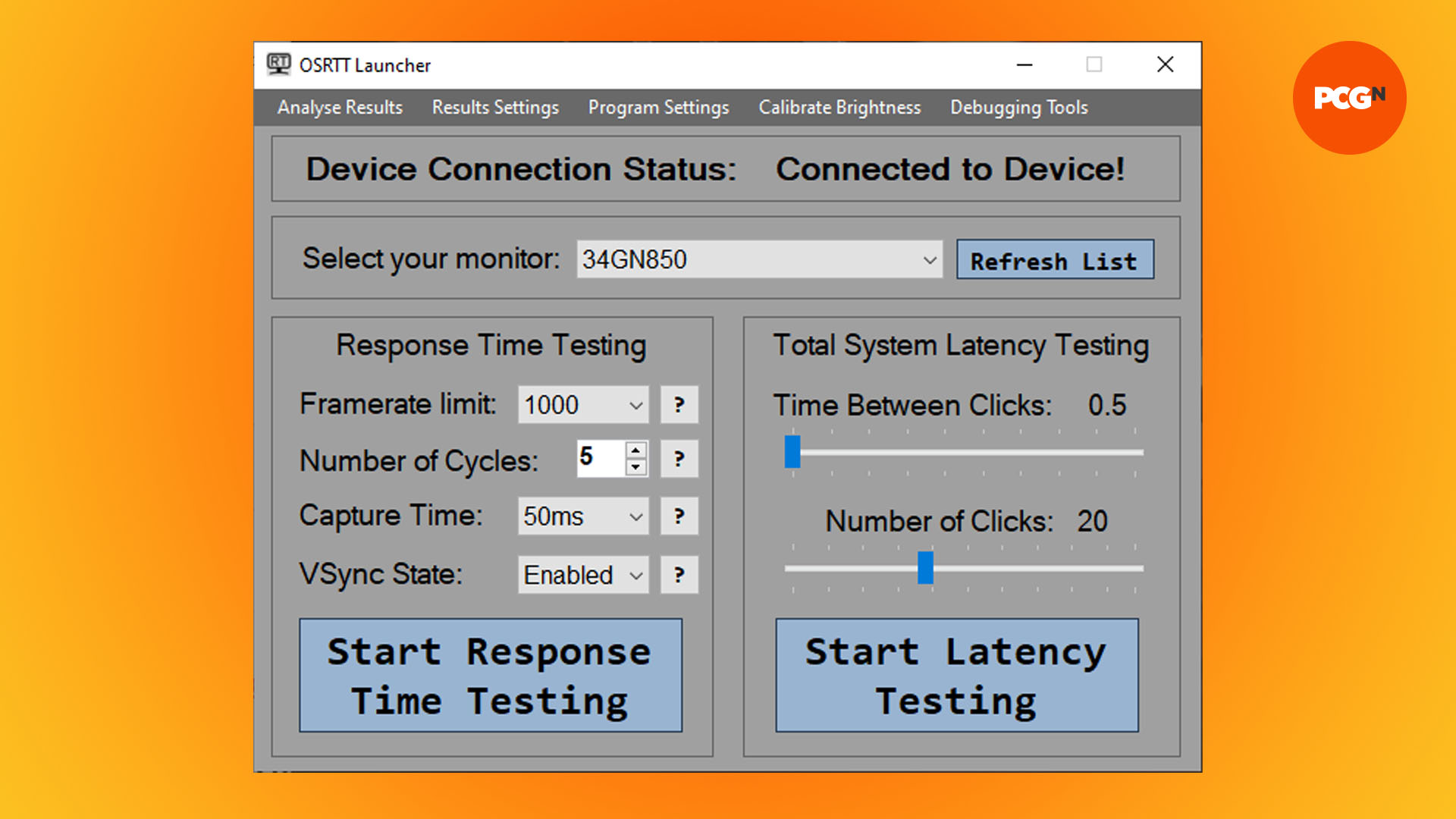
Typically, these will embrace the typical preliminary and perceived gray-to-gray response time for the very best overdrive setting for the monitor. We will even report any significantly notable points with completely different settings, comparable to if the best overdrive setting ends in important overshoot.
A abstract of the kind of key comparisons for any given monitor will be seen within the desk under. The outcomes characterize the three predominant LCD panel varieties, and we’ve in contrast their preliminary response time, common perceived response time, peak/worst perceived response time, and the extent of overshoot. Every monitor was fastened to a 144Hz refresh charge to maintain comparisons as honest as potential.
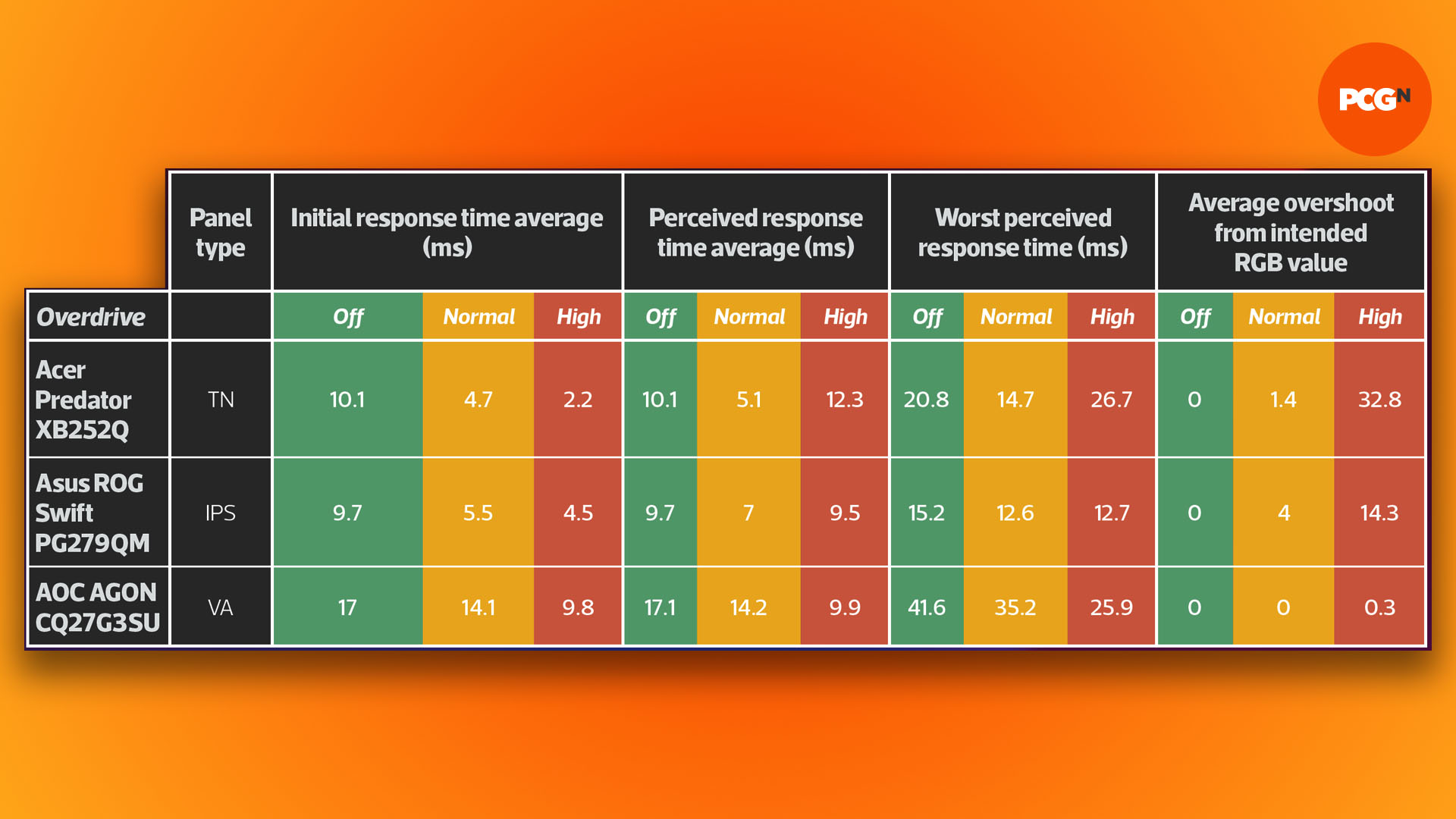
From these assessments, it’s plain to see the important thing benefit of TN panels, with the preliminary response time hitting as little as 2.2ms in comparison with 4.5ms for the IPS panel and 9.8ms for the VA panel, when utilizing a most overdrive setting.
Nonetheless, at this most overdrive setting, the TN panel additionally has atrocious overshoot, to the purpose that its perceived response time is worse than the opposite panels. Nonetheless, this gained’t all the time be the case with very quick TN panels, and if we drop again to a center/regular overdrive setting the TN panel gives a wholesome response time lead over the opposite panels, whereas having solely a tiny little bit of overshoot.
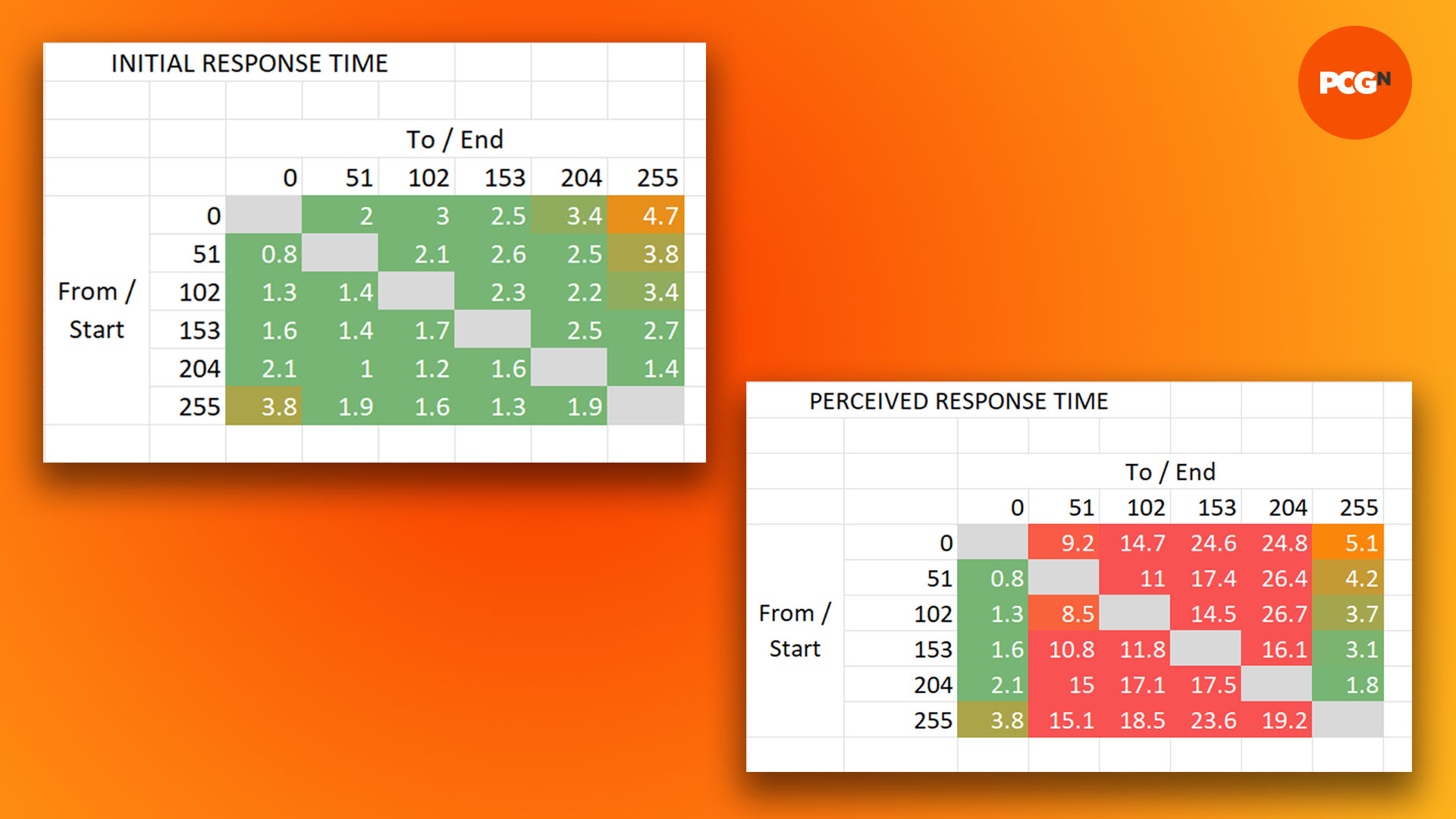
On this specific pattern of screens we’ve examined, it’s fascinating simply how little overshoot was measured on the VA panel, even at its highest overdrive setting. Which means that, regardless of constantly poor response instances with no or mid-level overdrive, you would on this occasion crank the overdrive proper as much as get a markedly higher response time with out compromising picture high quality or perceived response time. This implies it may effectively provide the perfect stability of quick sufficient response time and excessive distinction picture high quality for some customers.
That’s a wrap for our information on monitor response time, and also you’re now all clued up about what these pace figures imply. For extra details about monitor tech, learn our full information to gaming monitor panel tech, the place we take you thru the interior workings of TN, IPS, and VA shows.






